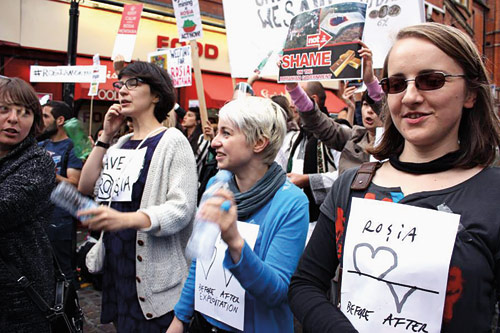2014
Dan Perjovschi
Just as characters are reduced to schematic lines, seemingly complex ideas find a simplified form in Dan Perjovschi’s drawings. Lacking the rhetorical or visual flourishes that often adorn political and artistic representations, his cartoons humorously unmask the hypocrisy that pervades all aspects of human interaction – from geo-politics to everyday life. Like the daily news, these drawings demand to be circulated rather than preserved in museum vaults. Although Perjovschi has become known for his ephemeral, large-scale installations, his work is also performed live and distributed via artist’s books, free newspapers and the Romanian magazine Revista 22, to which he has contributed weekly since 1991.

Perjovschi’s disavowal of traditional art forms is rooted in his experience of Romanian art academia in the 1970s and 80s. Frustrated by the constraints of official art, which, like the country, was then under the tight grip of Nicolae Ceauşescu’s regime, Perjovschi adopted drawing as a means of channelling social and political critique. Grids of sketched portraits hinting at the surveillance state began to populate his work in the late 1980s, culminating in the 5,000-ink-and-watercolour-drawing-wall Antropotheque (1992). Since then, he has given up on colour and draws directly on gallery walls, floors and windows. Using iconic images and few words, his sketches give an apparently transparent visual form to social and political taboos.

In recent years, Perjovschi’s accessible and direct language has earned him invitations to international biennials and museums alike. Such exposure has brought him close to some of the processes he critiques, such as the Westernisation that has followed the fall of communism, the art system’s exploitation of exotic identities, or the footprint of globetrotting lifestyles. Perjovschi critically addresses these contradictions in his drawings, for example by contrasting his ability to travel across the globe with the hindered mobility of migrant workers. In so doing, he complicates the relationship between the critical, international artist that he has come to embody with the neoliberal order that he endeavours to exorcise. – HV